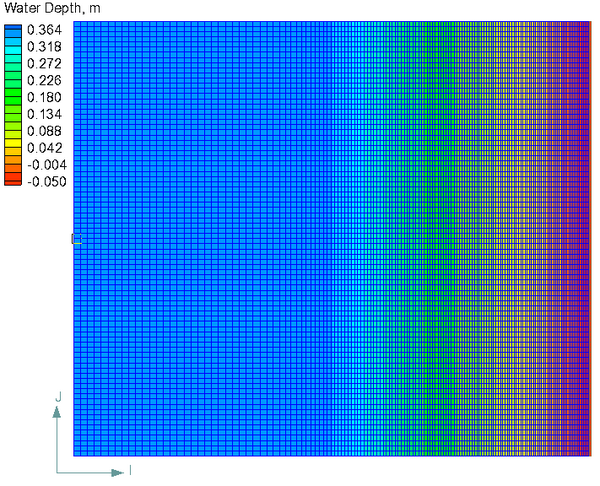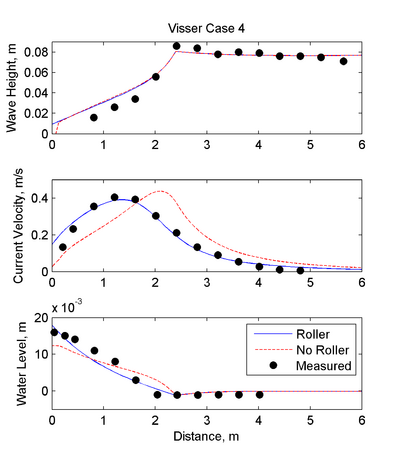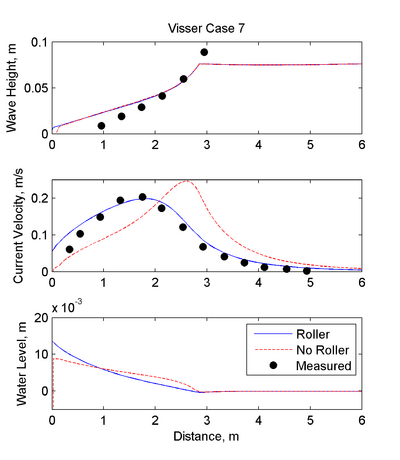Visser: Difference between revisions
| Line 9: | Line 9: | ||
== Results == | == Results == | ||
The figures below show a comparison between measured and computed bed elevations. | The figures below show a comparison between measured and computed bed elevations. | ||
[[Image:Visser4.png|thumb|left|400px|Case 4| alt=Case 4]] | [[Image:Visser4.png|thumb|left|400px|Case 4| alt=Case 4]] | ||
Revision as of 14:08, 13 October 2010
Setup
In 1991, Visser conducted eight laboratory experiments of monochromatic wave on a planar beach and collected measurements on waves, currents and water levels. The bathymetry consisted of a 1:10 slope for the first 1-m seaward distance, a 1:20 slope for the next 5-m distance, followed by a 5.9 m distance of flat bottom to the wave generator. Both experiments had incident wave heights of 0.078 m, peak periods of 1.02 sec and an incident wave angle of 15.4°. Experiment 4 was run over a concrete bed and experiment 7 was run of a thin 0.005-0.01 m layer of gravel grouted on the concrete floor.
The computational grid (shown in Figure 1) consists of 84 rows and 147 columns with a constant grid resolution in the longshore direction of 0.15 and a variable grid resolution between 0.04 and 0.15 m in the cross-shore direction. A zero water level was forced at the offshore boundary.

Results
The figures below show a comparison between measured and computed bed elevations.


References
- Visser, R. J. (1991) “Laboratory measurements of uniform longshore currents”. Coastal Engineering, 15, 563-593.